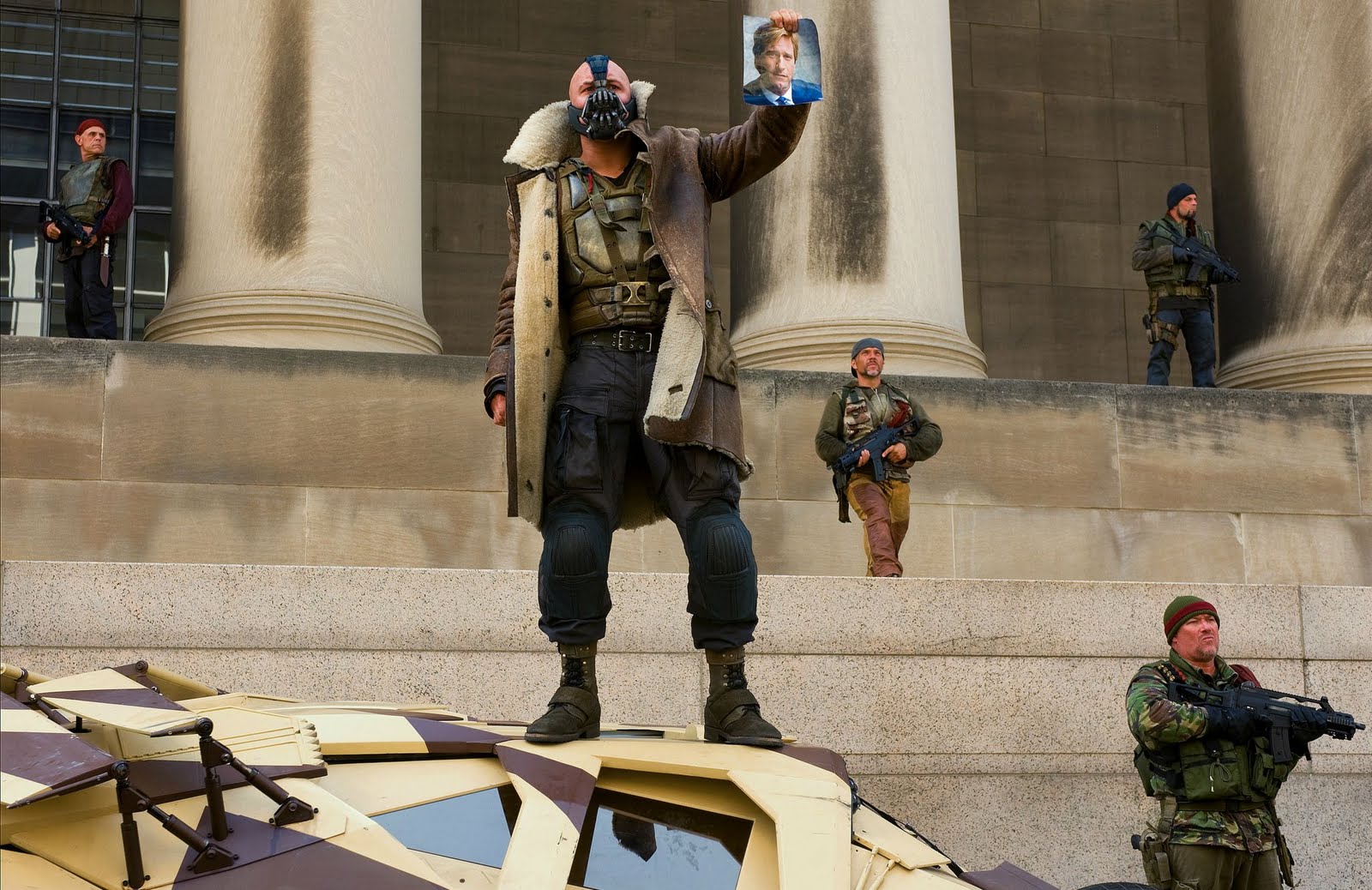5 Flaws in 'The Dark Knight Rises' That Couldn't Be Avoided
In the wake of the opening weekend for The Dark Knight Rises, a lot of us have been debating the merits and flaws of the movie. Of course, a side discussion also sprung up about whether we should even spend time analyzing every tiny detail of Christopher Nolan’s final Batman movie.
To be sure, The Dark Knight Rises has its flaws. Some would describe them as glaring plot holes, and others might call them unanswered questions. For my part, there are 5 things I noticed about the movie that left me scratching my head, but after a bit of thought, I’m okay with it. That’s because the problems couldn’t be avoided – read on to find out why.
But first: The list is obviously filled with SPOILERS, so reader beware!
1. Batman goes in and out of commission
A common critique of the film is that we see very little of Batman; Bruce Wayne spends most of his time re-training himself, first to put on the cape and cowl after an eight-year absence, and then again after Bane breaks his back. This means fewer fight scenes, less detective work and (maybe) less excitement.
This had to happen in The Dark Knight Rises. Being Batman is a struggle for Wayne even when he’s at the top of his game. It’s meant to be an inspiring symbol for Gothamites and viewers alike. If, in the case of an eight-year gap and brutal beating, Batman spent just as much time jumping around as he does in other movies, we’d still be crying foul. We wouldn’t believe in Wayne’s spiritual and physical journey, and the movie would fall apart.
2. The structure of Bane’s Gotham
The movie’s core setting is a Gotham City plunged into anarchy. Bane tells its 12 million residents that they are now free to do whatever they want. But it’s not totally clear how everyday events, like garbage collection or food distribution, are happening.
Here we have a social system that’s nearly impossible to imagine, let alone portray in a movie. For every bit of definition Nolan puts into the script, it only creates more questions about the city works. It’s a never-ending cycle, because there’s nothing in the real world to compare it to. The same can be said of any post-apocalyptic story: there’s simply too much for any creative team to figure out on their own. The solution? Depict the general situation in Gotham and focus on what the characters do to fix it.
3. How Bruce Wayne gets back to Gotham
As the third act of the film begins, Bruce Wayne is seemingly broke and stranded in whatever Eastern country plays host to Bane’s prison pit. Fans have wondered how Wayne could travel back to Gotham and then infiltrate a city that’s kept in lockdown by the United States military.
There’s no point speculating about Wayne’s secret cash reserves, hidden vehicles or stealth training. It’s far simpler than that: Wayne gets back into Gotham because the story requires him to. The core function of narrative (and non-linear film editing) is selecting key pieces of information to tell a story. If we saw every single action these characters completed to move the story along, we’d be bored stiff. Plus, don’t we want to preserve some of Batman’s mystique – just a little bit?
4. What happens to Bane
A lot of viewers found the last appearance of Bane anti-climactic. Bane is blown back by the guns on the Batpod, and doesn’t even get in final quip. Even I found this a little dissatisfying as first, but then I looked back at the ways other Batman villains have been defeated in the Nolan trilogy so far.
Each of the villains has had an ambiguous ending: Ra’s al Ghul, Scarecrow (in both movies), Two-Face, the Joker. Bane gets a similar ending, only more brutal and sudden, as befits his character. Some have said that he at least deserved a last speech, like the Joker. But it was Talia al Ghul who was really running the show, and that undermines Bane’s status as the key villain – in a good way. Bane enjoyed being Gotham’s warlord, but now he’s demoted to the role of an enforcer, and his defeat reflects that.
5. The explosion of the neutron bomb
The biggest climax in The Dark Knight Rises is Batman’s decision to sacrifice himself and fly the neutron bomb out to explode at a safe distance from the city. I won’t bore you with an explanation of how neutron bombs work – suffice to say that there’s all kinds of problems with the scene.
In general, nuclear weapons have a tortured relationship with movies. But how can we expect filmmakers to get nukes right? Nuclear explosions are one of the biggest “what if?” events in moviemaking. And there’s not much else Nolan could have done. If the bomb had gone off in a realistic way, the result would be too shocking. If the device had been defused, the climax would lose its punch. We should count ourselves lucky they didn’t try to restart the Sun with the thing.
-
What parts of The Dark Knight Rises got on your nerves? Did they make you dislike the movie, or will you still love Nolan’s film, despite the flaws? Is there any point examining the movie with a microscope? Sound off in the comments section! If you liked this post, share it with your friends and followers, and browse through my other articles on movies:
-
4D Movies: The Latest, Greatest Gimmick Comes to North America
The 4 Simple Things Every Pixar Movie Needs
How Do You Sell a 48 fps Movie?
-





